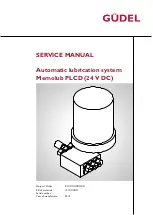
sieving results. Whatever method you use,
it is essential that your starting point is
based on ASTM specifications. This
compliance is necessary to assure
uniformity between and within industries.
CHAPTER 6
PERFORMING THE SIEVE ANALYSIS
In obtaining meaningful sieve analysis
data, six major steps are recommended. 1)
Obtain a representative sample of the
material to be evaluated. 2) Prepare the
sample for evaluation; this may involve
washing and/or drying the sample. 3)
Reduce the sample to a size suitable for
the sieve analysis procedure. 4) Perform
the actual sieve analysis procedure. 5)
Compute the data and convert the data
into a usable format. 6) Organize the data
and assemble the information for
presentation.
Granular and powder materials are
prone to segregation during movement and
storage of the products. This segregation
can be due to the disparity of the particle
sizes and the varied densities for blended
products. When forming a stockpile of
material, the larger, coarser particles are
heavier and tend to roll to the lowest
portion and outer perimeter of the cone.
The finer particles are lighter and more
angular and remain concentrated at the top
and through the vertical center of the cone.
Obtaining samples from only the outer
perimeter or from the top of the cone
would not provide a sample which would be
representative of the entire batch.
Sample extraction and preparation is
the most commonly overlooked variable in
sieve standardization programs. Testing
bias can be added at many places along
the progression from the raw materials
received from a supplier, samples taken at
each stage of production, sample reduction
procedures and samples when the product
is ready for shipment to the customer. The
way the samples are extracted from the
original bulk volume varies with the way
the materials are received, produced or
stored. The ideal sampling method is one
which provides the most representative
sample with the least amount of material
required.
The following paragraphs were first
published in the ASTM technical publication
STP 447 A. The collaborative efforts of the
authors have produced a section on
sampling technique which will aid in
obtaining representative test samples from
larger test sources…
(7)
Sampling from a chute or belt
Accuracy in sampling is obtained where
material is flowing from a chute or belt
conveyor. The ideal place to collect the
sample is where the material drops from
the chute or belt. If the material stream is
small enough, use a pail or other suitable
receptacle which can be swung completely
across the flowing stream in a brief interval
of time and with uniform movement. The
sampling receptacle should not be allowed
to overflow, because the overflow would
tend to reject a higher proportion of the
larger particles that exist in a
representative sample. Mechanical
sampling devices are available for selecting
samples automatically from a stream at
uniform time intervals.
Sampling from carload shipments of
coarse bulk material
For coarse materials, such as crushed
stone and gravel, shipped in railroad cars,
a recommended method is to dig three or
more trenches at least 30.48 cm (1 foot )
deep and approximately 30.48 cm (1
foot)) wide at the bottom. Equal portions
are taken at seven equally spaced points
along the bottom of the trench by pushing
a shovel downward into the material and
not by scraping horizontally. Samples from
trucks, barges, or boats should be taken in
the same manner as from railroad cars,
except that the number of trenches should
be adjusted to the size of the
transportation unit and tonnage involved.
Summary of Contents for L3P Series
Page 2: ......
Page 14: ......
Page 34: ...Table 1...
Page 35: ...Table 2...
Page 36: ...Table 3...
Page 37: ...Table 3 cont d...
Page 38: ...Table 4...
Page 39: ...Table 5...
Page 40: ...Table 6...
















































